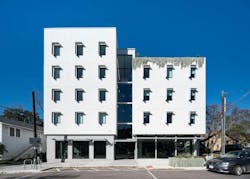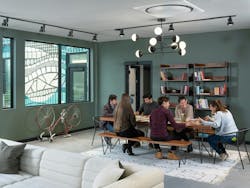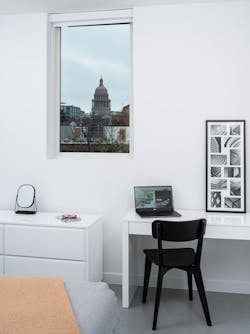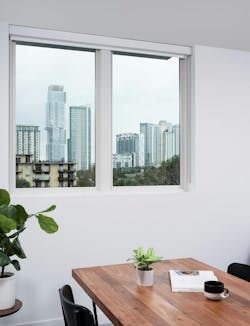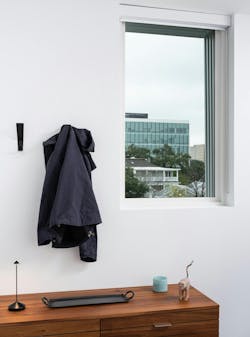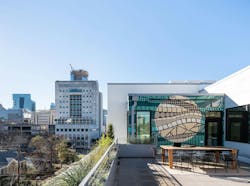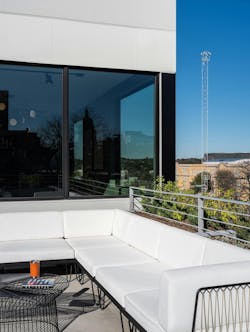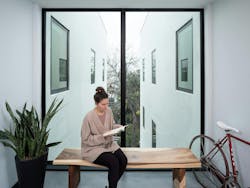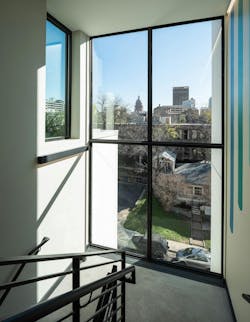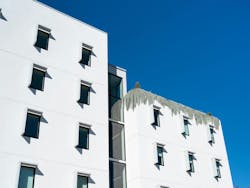An 'eco-obsessed' multifamily housing project takes advantage of downtown Austin’s small lots
By Novid Parsi, Contributing Editor
In downtown Austin, Texas, architecture firm McKinney York says it built Capitol Quarters to be “eco-obsessed, not just eco-minded.”
With airtight walls, better insulation, and super-efficient VRF (variable refrigerant flow) systems, Capitol Quarters uses 30% less energy than other living spaces in Austin, according to a statement from McKinney York. The building, which also features a rainwater collection system, has a 4-star rating from Austin Energy Green Building and a 2-star rating from Fitwel.
The 45,000-sf, mixed-use building includes four levels of workforce housing above ground-level retail, in addition to a fifth-floor rooftop terrace. Light shafts carry daylight deep into the building and create brightly lit vertical circulation paths that divide the plan into four quadrants. As a car-free multifamily building, Capitol Quarters takes space that would have been devoted to cars and instead uses it for housing.
The growth of residential units in Austin has declined sharply in recent decades, according to McKinney York, citing housing market analysis by Root Policy Research. As the city has grown, small, formerly single-family lots that made up much of central Austin have been converted primarily to commercial uses. Today, these small lots offer housing opportunities for developers such as Weaver Buildings, which led the Capitol Quarters project.
Small-lot developments such as Capitol Quarters offer the following public and private benefits, according to McKinney York:
- They’re sustainable—in part because they take advantage of the existing water, sewer, roadway, and public transit infrastructure already serving central Austin.
- They foster urban vibrancy and neighborhood safety.
- Their morning, evening, and weekend activity supports local businesses.
- They help diversify Austin’s housing stock ownership.
“There is no singular fix to the shortage of housing in Austin. However, unlocking the development potential of our many small sites offers one way to contribute to the solution,” McKinney York writes.
On the Building Team:
Developer: Weaver Buildings
Architect: McKinney York
Construction administration architect: Spencer Pierce Architecture and Interiors
Civil engineering: Pape-Dawson
Landscape architecture: Coleman & Associates
Structural engineering: Structures
MEP: Aptus
Public space architecture: Activate Architecture
Construction: Lott Brothers Construction Company
